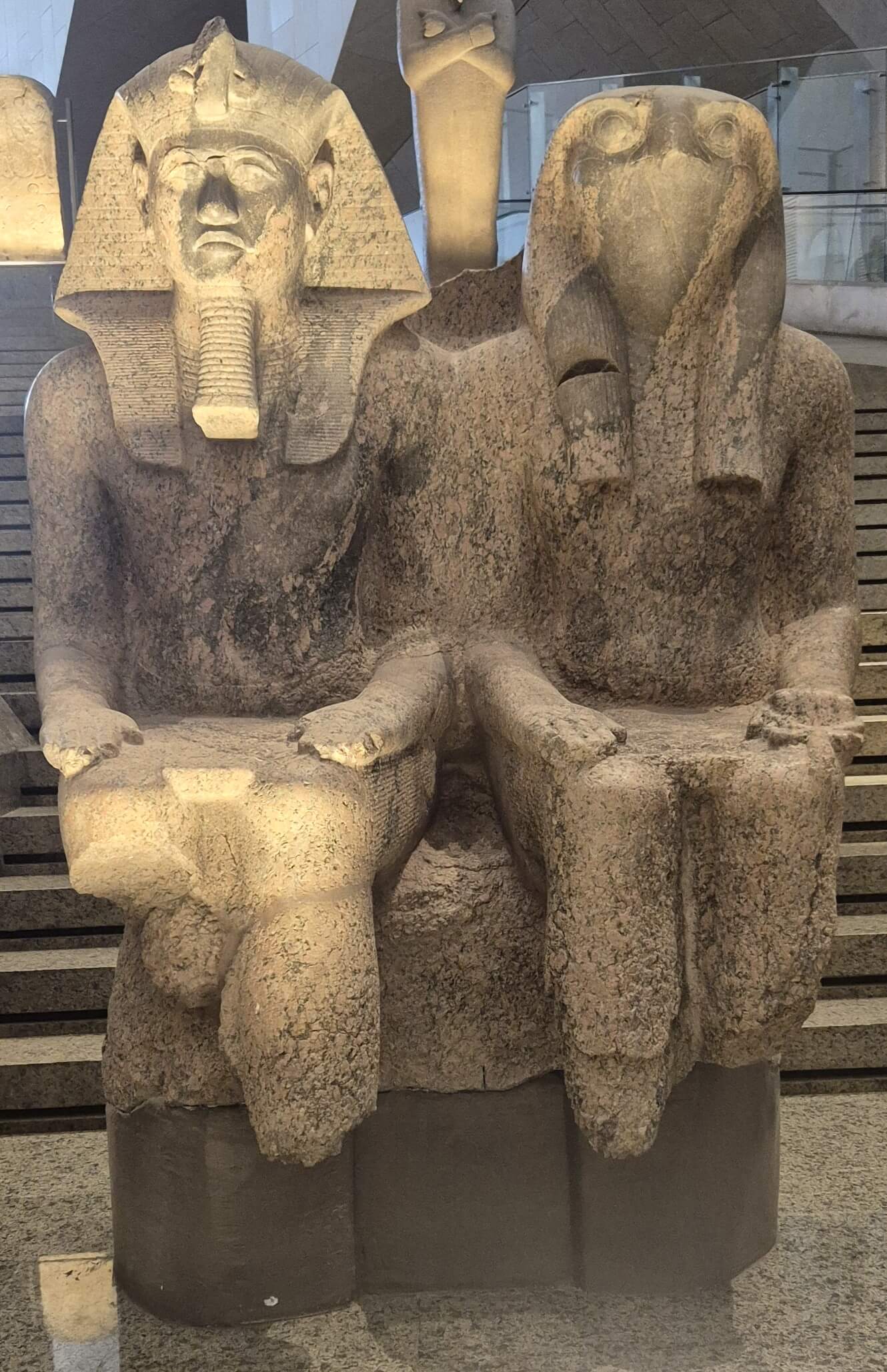
GEM 45833
Statue of King Amenhotep III & God Re-Horakhty
This remarkable statue depicts King Amenhotep III seated beside Re-Horakhty, a powerful solar deity who combines the attributes of Re (Ra) and Horus. Re-Horakhty was often shown as a falcon-headed man wearing the solar disk, and he symbolized the daily rebirth of the sun, which gave life to all creation. Amenhotep III, one of ancient Egypt’s most prosperous and artistically significant pharaohs, ruled during the 18th Dynasty (circa 1390–1352 BCE). His reign marked an era of immense wealth, diplomatic exchange, and monumental building projects.
This statue is unique for its dual representation of divinity and kingship, reflecting the deep connection between the pharaoh and the gods. The granite used for this statue has a distinctive blend of red and black hues, symbolizing the merging of the fertile land of ... Découvrez plus avec Premium !
Débloquez toute l'histoire de cet artéfactPassez à Premium pour accéder à la description complète, aux guides audio et au contenu exclusif de tous les artéfacts.Accédez à l'audio complet et à la description des principales œuvres du GEM pour seulement 1,99 $
Vous cherchez un autre artéfact ?